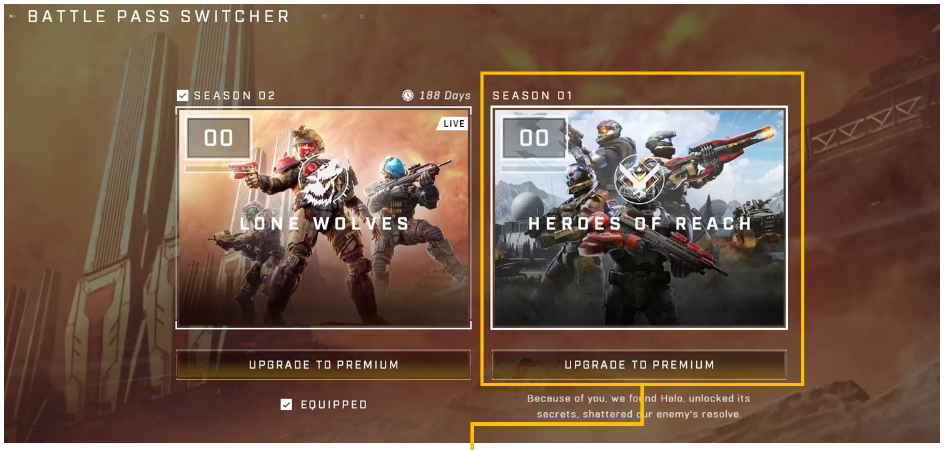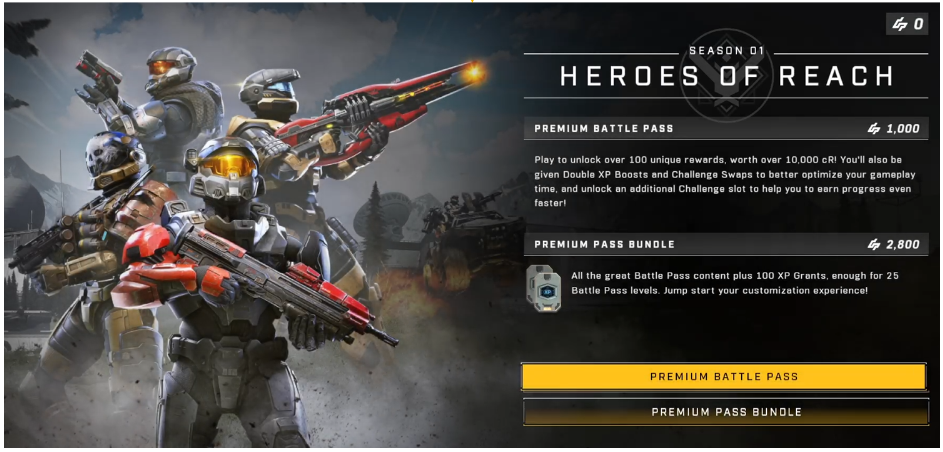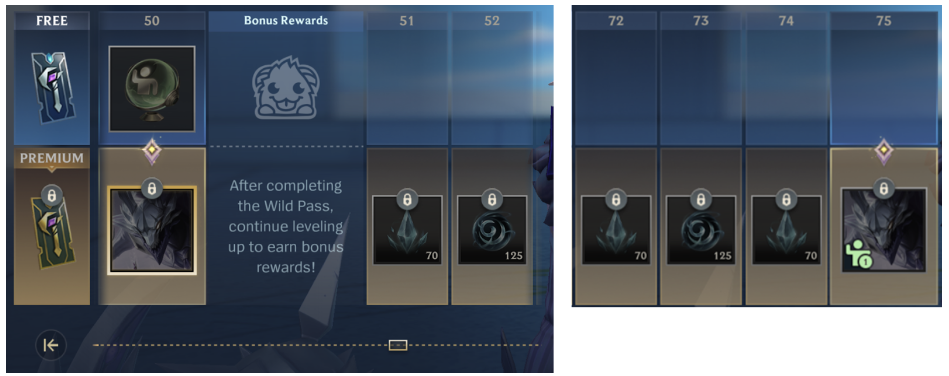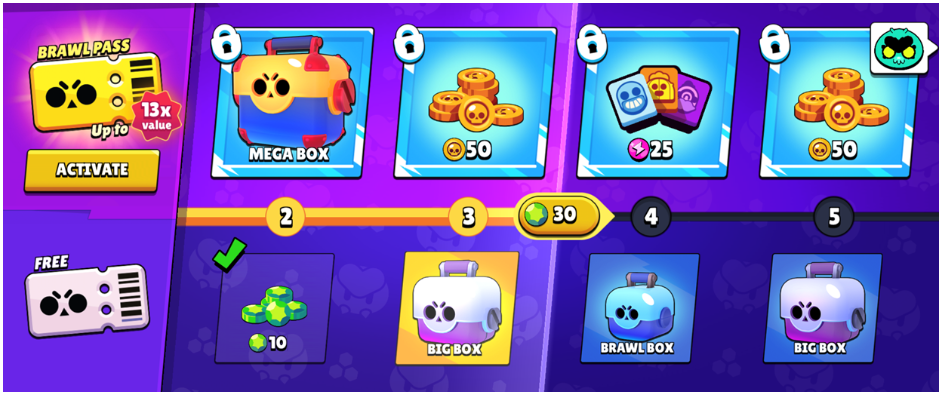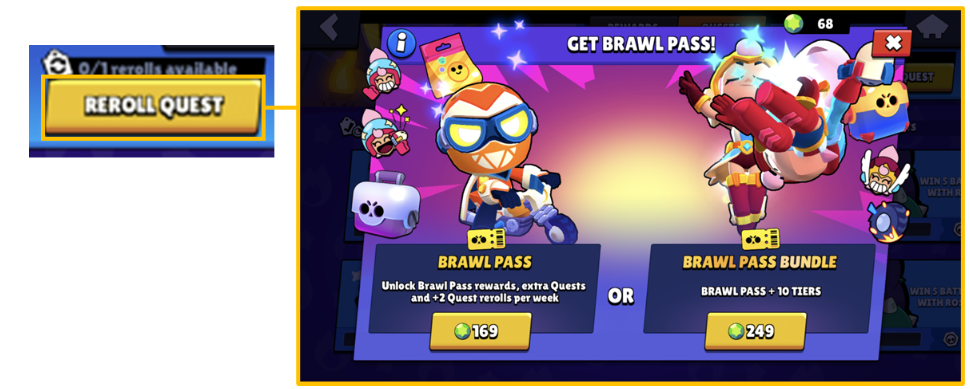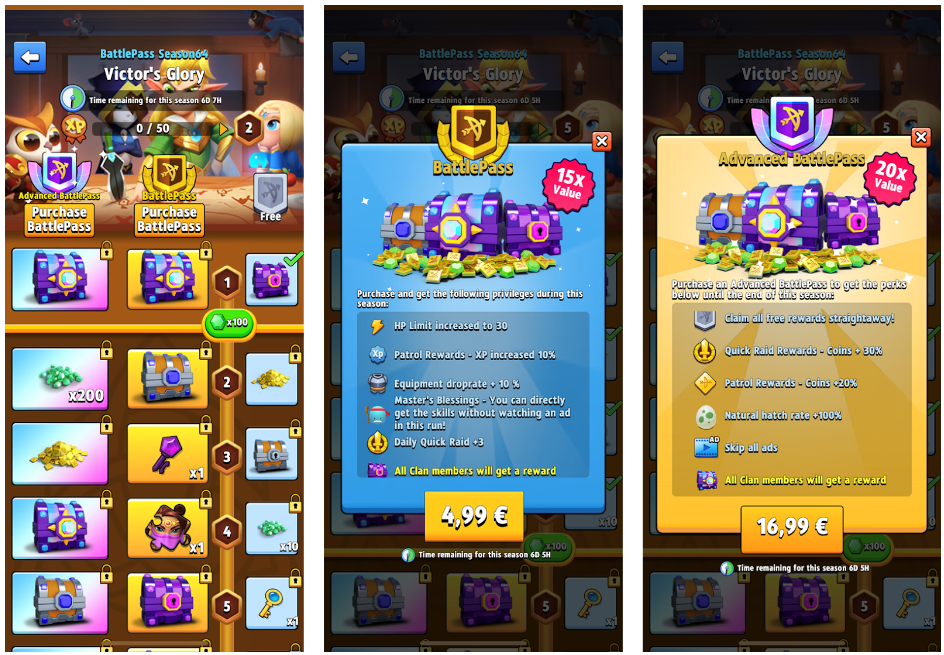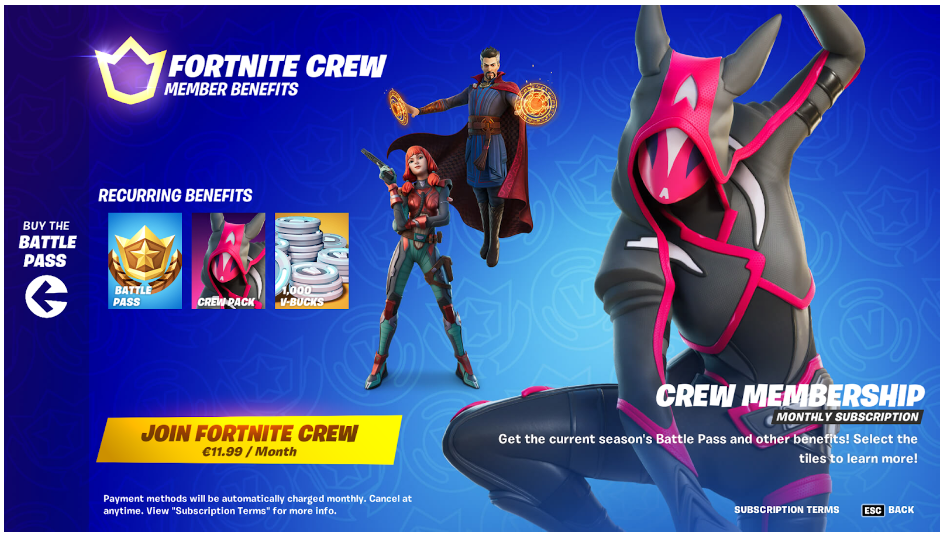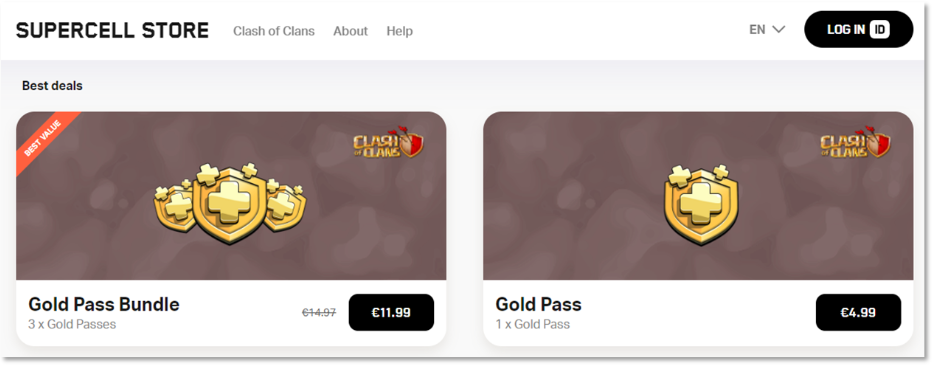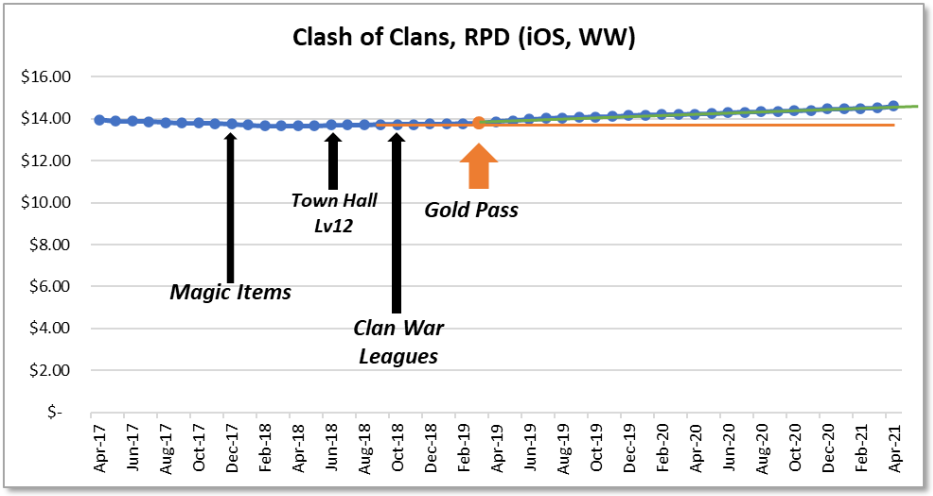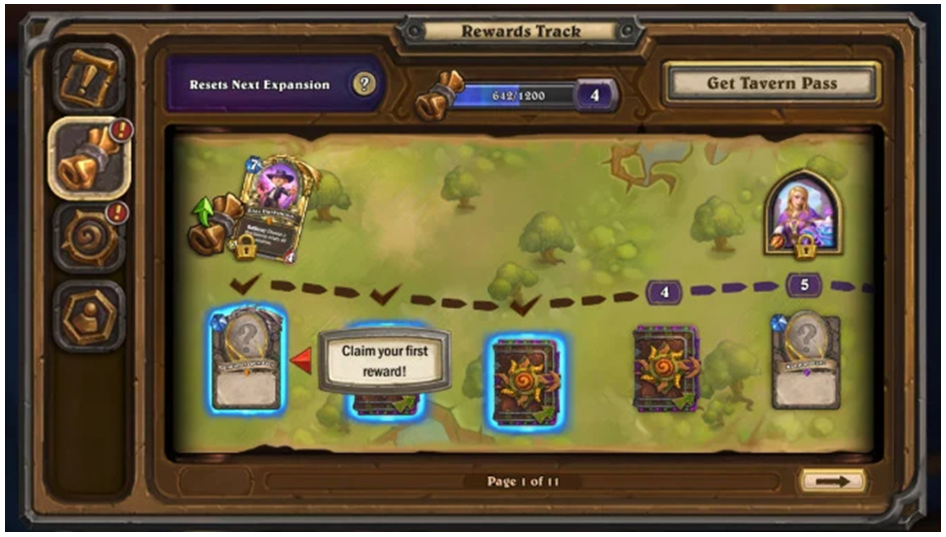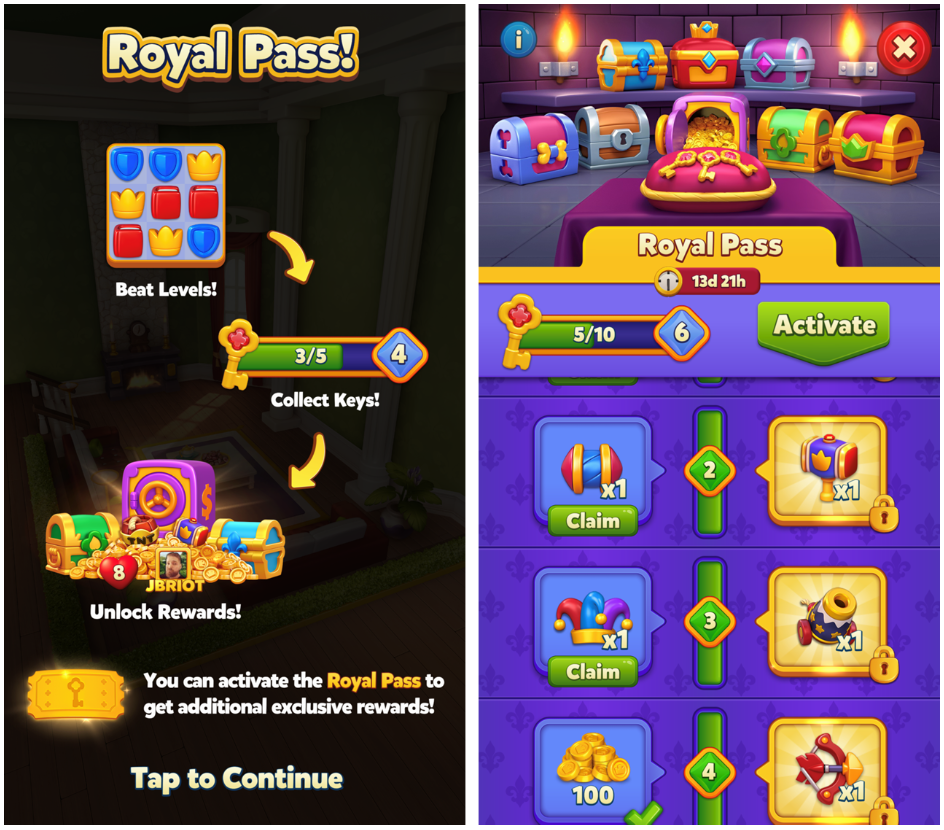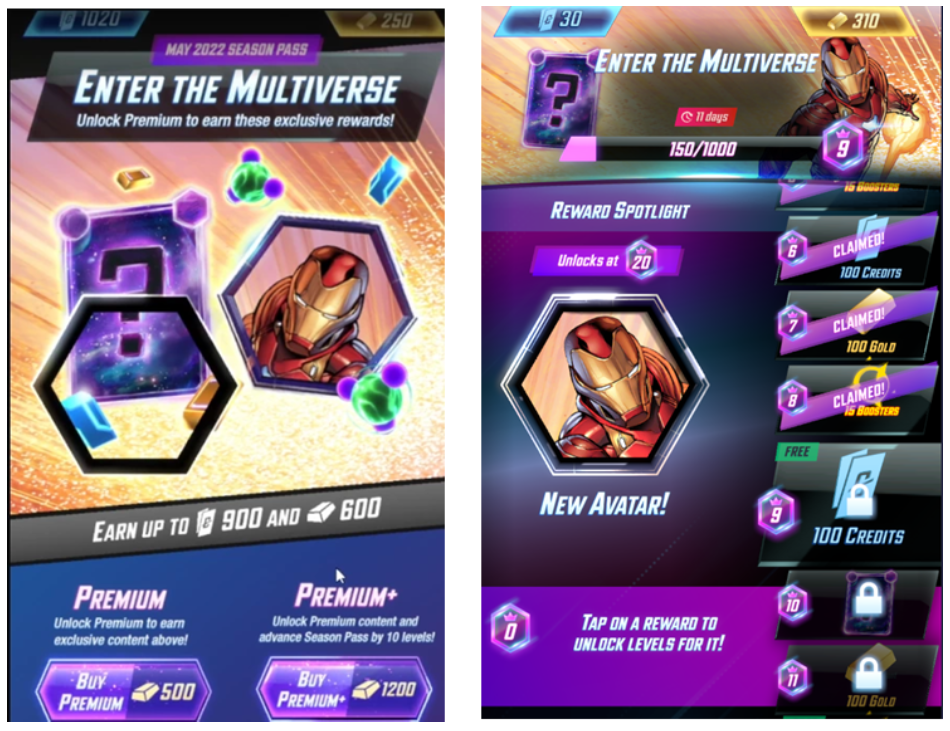Battle Passes - Everything You Ought to Know and Then Some
Deconstruction written by Javier Barnes. Opinions shared are personal and do not reflect those of the employers.
Battle Passes were first introduced in Valve’s Dota 2 and Team Fortress 2 and later popularized by Fortnite (which still today holds one of the most advanced and constantly improving designs). But they’ve long since stopped being exclusive to mid-core, cosmetic-driven games and nowadays are present in a constantly growing amount of genres and games.
The fact that Battle Passes have been successful on audiences so alien to each other like MOBAs and Match-3 Puzzle fans shows how versatile its design can be. Passes can generate different player experiences, follow a different balance, and emphasize different components depending on the genre and audience.
When considering Passes, it’s important to note that they are not exclusively a monetization feature. For most players (including payers) the Pass is primarily retention and an engagement mechanism. So it must provide the right incentives to engage them in fun activities and keep them interested in the rewards.
It’s also important to understand that Passes are not a straightforward feature to balance that can be applied to any game without risks. If not handled correctly, Battle Passes may end up generating a negative effect on game revenue. It can happen even to the best:
There’s a strong temporal correlation between the introduction of Battle Pass in Clash Royale and a drop in their total revenue per month. Source: SensorTower.
And also, they’re here to stay. We predict that Battle Passes and other soft and broad appeal monetization tools will become even more relevant in the future; since the growing hardship of launching successful new titles will push games to implement more user-friendly monetization approaches aiming to protect and grow their most valuable resource (players), and actively avoid aggressive, fast burn models.
So in this article, we will catalog the key components of Battle Passes and how they’re applied to different games, share some tips on how to balance them and provide our ideas on how they may evolve in the future.
Exec Summary
Passes are a versatile feature effective for monetization, but also for engagement and retention. So they need to provide not only a great value proposition but also an enjoyable experience that keeps players engaged for long while not feeling too grindy.
As a monetization tool, Passes generate strong conversion but are very limited in ARPPU potential. Most revenue is made with the upfront purchase, so successful upsell strategies rely on securing recurrent purchases, increasing the number of Passes sold, and providing alternative higher upfront prices.
Passes tend to cannibalize other purchases and may end up damaging the total revenue, particularly if the game has low spending depth or low pressure to progress. So it’s a good idea to ABtest them, monitor the total revenue and player inventories, and the ARPPU of high spending profiles, to guarantee a positive tradeoff.
Designing a Pass requires many decisions on each of its components (explored in the article). It’s key to understand the strengths and weaknesses of the game, and the characteristics and expectations of its audience, to make the right choices.
Most games in the top-grossing already have Passes. We believe they will grow even more in relevance and depth, as the industry shifts towards retention-friendly and broad appeal monetization tactics to counter the growing difficulty to acquire specific audiences with high spending profiles.
Psst! We dive even deeper (or skip the reading) with a podcast on battle passes. Enjoy from the links below.
Why are Battle Passes so successful?
Before jumping into how they work, it’s worth understanding why Passes have become such a popular feature among devs and players. We highlight the following key benefits:
#1 They foster engagement and retention. Obviously, due to the free track of rewards, Battle Passes provide an incentive for all to play regularly and not lose the chance to earn them. This retention effect is even stronger among those that bought it since they will be wasting their investment if they don’t play regularly.
Additionally, the Pass-related quests are great to foster horizontal content exploration, by directing players to engage with specific game modes or incentivizing them to acquire, play with and upgrade all the characters.
These missions can be released progressively to provide a reason for players to come back regularly to the game.
#2 They offer a great value deal for players, generally providing so much value compared to the cost that constitutes a no-brainer purchase for everyone. So Passes have a broad and strong effect on the conversion and reconversion of both non-payers and regular spenders.
This is not only great to generate a lot of revenue. The affordable price of most Battle Passes also allows the game to obtain value from a spectrum of audiences beyond high spending demographics and tier-1 countries. This means more valid targets when aiming for growth.
#3 They create a regular spending pattern, in a sustainable and affordable way. For many players, the Pass is the only thing they buy in a month. And provided that it doesn’t cannibalize the spending habits of higher spenders, this is great because repeated spending it’s the key to high LTVs.
Sustainability is key to building long-term retention: It turns the game into a hobby that can be kept for months and years. Compared to more demanding models that may monetize much more, but also risk burning their players because regular people simply can’t spend $500+ in a game per month before they consider if there aren’t better ways to spend their moment on entertainment.
Spending predictability is key in games oriented to very young audiences, where monetization generally requires some authorization from parents, that prefer that their kids play games that include safe spending habits. In other words, same as with game subscriptions, the Battle Pass can act as a form of allowance for kids, while being safer than giving kids actual money that they could misuse.
#4 They are more user-friendly than most other monetization tools, which makes them more applicable to audiences that are very sensitive to monetization, like the one in mid-core action games. Some of the reasons why Battle Passes are more positively perceived than other monetization features are:
Battle Passes extract a bit of revenue from a big chunk of the payer population, as opposed to most other monetization tools that aim at generating a lot of revenue from a small number of payers. So Passes barely increases the monetization pressure on spenders and avoid alienating low spenders.
They involve player skill and time spent, so the contents are perceived as more meritocratic and effort-based than a direct purchase.
Passes also lack strong frustration points that generate disappointment, compared to other monetization mechanisms like timers (that temporarily block the access to the fun) or loot boxes (that obfuscate the actual value of the purchase).
Friction points in Passes
Although Passes have a better PR than many other features in the F2P space, they do generate some minor friction points for players. Among them:
Battle Passes can be frustrating for players that buy them but are not able to extract a significant part of the value, especially if pass-related tasks often require the usage of secondary items or characters that the player doesn’t own.
For this reason, they progressively become a worse deal the more time it passes since the release day, as players have more risk of not being able to extract the whole value of the Pass due to lack of time.
It is often argued that the progressive release of quests alleviates this by providing faster progression for a late player, but IMO this is not a perfect solution: Even if more quests are available and can be completed in parallel, buying a trimestral pass in the last week will require massive engagement, and involves a higher risk for the player.
Depending on how they are balanced in terms of total length and tempo of the rewards, as well as what type of activities they demand, Passes can feel quite grindy. This can be particularly stressful if their expiration date is getting close: Having to play intensively to avoid having wasted your money can sour what should be an enjoyable experience.
And especially if it involves exclusive content, it can be punishing for a player joining the game months later to discover that there’s no way to obtain past cosmetics they like.
From the developer side, exclusive content also means running a feared content treadmill and potentially having an ever-growing client size.
Aiming to solve these issues, some of the innovations of the Halo Infinite Battle Pass is that once bought, the pass will not expire, therefore keeping it attractive even when there only remain a few hours to the release of the next one, and avoiding frustration by payers that can’t play intensively and don’t complete it. To me, this sounds like a great idea.
Halo Infinite also allows buying past Battle Passes after their original release, which then can be completed. In other words, Passes don’t expire. (The player can't complete several at once though, only on the currently “equipped”).
This can optimize the value of past cosmetic content and alleviate the ever-growing need for more, but I’m a bit skeptical since it may ultimately damage the FOMO effect which acts as a conversion trigger. It will be interesting to see how it turns out in the long term.
Key components of a Battle Pass
Pricing
When it comes to pricing, most mobile Battle Passes range from $5 to $15 in the basic tier, which is fairly cheap but not the regular ultra-low conversion offer price. This is a significant margin and the exact right price will depend on the specific game audience.
The logic behind this is to aim at the sweet spot between a price low enough to be reasonable to a significant amount of potential buyers, but also high enough to be meaningful in terms of revenue.
Provided that it doesn’t cannibalize significantly the rest of the purchases and that the game has good enough retention, IMO the Pass is a virtual product where it’s worth aiming slightly lower than what we would consider the “optimal price for the maximum amount of revenue in the short term” since its cyclical nature will end up building more total revenue over time.
In other words, it’s better to make players pay less but often.
Conversion Triggers
The psychological trigger for Pass conversion is the fear of missing out and the sense of opportunity. IMO, this translates into three main purchase drivers in the player's mind:
If I don’t buy it before it expires, I’ll be losing all the premium rewards I already grinded!
If I don’t buy it, I’ll be wasting my time getting fewer rewards than I could when I play!
If I don’t buy it, I’ll miss this particular exclusive cosmetic and regret it later!
I get THIS MANY CONTENT for this little money!? You’ve got a deal!
As a consequence, many premium Pass conversion mechanics orbit around highlighting and reinforcing these drivers. Some examples are:
Faster Progression. Some popular mechanisms for that are a Pass-XP acquisition boost or premium Pass-exclusive tasks. The XP boost is better to incentivize players to buy the Pass as soon as they can, while the exclusive tasks mechanic doesn’t lose value as the season progresses, and in fact, grows in value over time as the player depletes the easily achievable tasks.
Brawl Stars features Pass-exclusive quests which may come in handy when the season is advanced and the player has depleted the easy tasks.
Instant Exclusive Rewards. And instant gratification for purchasing that helps to counter any post-purchase regret and provides at least some exclusive elements without the player risk of having them located at the end -- and never reaching them.
Call of Duty Mobile Battle Pass offers both exclusive instant rewards and a 25% XP boost for players that choose to buy the kickstarted version of the Pass. This makes it more attractive than just skipping a few early tiers.
A final layer of premium-only rewards. This means that after a certain point, engaged players will find out that they’re playing for no rewards unless they acquire the pass.
Wild Rift incorporates 25 additional levels after the player reaches the “final” level 50 and claims the exclusive seasonal skin. On top of providing additional content with an exponential time investment, it acts as a push for monetization. Engaged non-payers that get to the end get no more rewards from the Pass unless they pay.
LiveOps linked to Pass content. This is a mechanism that Fortnite uses extensively: Time-limited events that require ownership of content obtainable in the Pass. This means that Pass players not only get rewards but also a significant expansion on the playable content as well. And that non-payers are constantly reminded that they’re missing actual playable content. Some examples:
The Deadpool Challenges was a time-limited event that granted exclusive rewards. Players could only participate in it if they owned the Deadpool costume, which was an exclusive content of the Pass.
In the current season, there’s an event related to completing unique quests to gather customizations for the Omni Sword. The catch? The Omni Sword is a Battle Pass exclusive content…
Upselling Mechanisms
Most of the revenue of Battle Passes is generated through the upfront purchase. So most mechanisms to generate upsell are based on increasing the upfront price by adding extras, securing the regularity of purchase, or selling more of them.
Few mechanisms try to push subsequent purchases inside (like Tier Skips or Rerolls), since they are primarily painkiller mechanics, meaning that making them valuable would require increasing the frustration of the Pass, therefore damaging its core attractiveness.
Some of the most popular upselling mechanisms in Battle Passes are:
Kickstarted Premium Pass. An alternative higher price that allows the player to skip some of the beginning steps, therefore making it easier for players to get to the end. In some cases (like Call of Duty Mobile), it may also include a progression boost that makes completing the whole Pass even faster and other extra benefits.
In Fortnite and Brawl Stars (among many other games), players can choose between the regular premium Pass or a kickstarted alternative that grants a lot of rewards right away and skips a bunch of menial tasks, allowing the player to focus on the juicy rewards.
Tier Skips. In my experience, skips account for a very little part of the revenue of the Pass, so they can be considered just a minor sink at best. Making Tier Skips more attractive would require adding more grinding to acquiring rewards, which would damage the overall value of the Pass and generate frustration (many players not completing the entire Pass or having to make additional purchases to get enough value would make them choose not to buy it again).
Impatient Brawl Stars players that can’t wait to complete a bunch of matches to get their next reward can spend hard currency to get them right away, but this is hardly a good deal.
Mission re-rolls. Re-rolls can be particularly useful in games where Pass tasks are very focused on the horizontal expansion (i.e. require to play a specific mode or character the player hasn’t mastered or dislikes), but ultimately same as the Tier Skips, they generally don’t tend to generate a lot of revenue and act as a minor sink. Frustrating players with quests they don’t want to do is not a good way to incentivize them to buy the Pass.
In Brawl Stars, rerolls can be very useful as they allow the player to skip quests focusing on Brawlers or modes they don’t want to focus on. But instead of selling them directly, they are used as an extra incentive to buy the premium Pass.
Multiple Battle Passes (Event passes, Game Mode passes…). Another way to increase Pass sales is to provide more variety of them. For example by linking them to shorter events rather than long seasons (meaning accelerating the release ratio), or by having additional passes linked to specific game modes, meaning that there are more passes running in parallel (although increases the risk of cannibalizing player attention). This approach can significatively increase the revenue from Passes.
Legends of Runeterra passes were linked to events, which allowed them to have a ratio of one pass per month (compared to TFT passes which last 3 months because they’re linked to seasons).
Monster Legends features two different pass systems: One for the core game (Legends Pass) and another for the Multiplayer game mode (Battle Pass). This increases the number of Passes bought by engaged players.
Archero has two Premium tiers running on top of the Pass, each granting bigger benefits. This allows low spenders to find an affordable price point, while also incentivizing high spenders to buy them both. (Thanks Harshal Karvande from the DoF community for the pics!)
Subscription systems. A great way to finalize customers is to avoid that they have to remember to purchase your amazing Battle Pass every new season and press the BUY button -- that could make them do a deeper analysis on if they really need to buy it. In kid games, this makes it more comfortable for parents to manage as well that having to validate the purchase every time.
As an alternative to the Battle Pass, Fortnite offers a subscription system. On top of the Pass, subscribers obtain an exclusive skin and additional currency. According to Game Refinery, Call of Duty Mobile is testing a similar feature.
Pass Gifting. This is a way to increase the amount of Battle Passes that a generous payer buys, to donate them to their clanmates or friends. In kid-oriented games, it can be useful for friends and family members to give the child a birthday gift.
Fortnite allows players to purchase and give Passes to others, which has the unfortunate effect of making my nephew ask me to buy it for him every single month. When I refuse, he asks his grandparents.
Bundle Purchase (Buy several at once). While not a very common practice, there are some instances of games offering to sell bundles of Passes, which can be useful for gifting to others.
Through their website store, Supercell fans can buy a bundle of Gold Passes with a 20% discount. The obvious intention is to try to move this high-value purchase to third-party payment systems, therefore avoiding the store platform fees. These Passes can be activated by the player, or gifted to others.
Content Value
On top of being cheap, Battle Passes need to be generous. Otherwise, they won’t generate the desired strong conversion effect. So they offer amazing value, often ranging from x10 to x20 value of rewards versus price.To put this in context, an x10 value on a classic direct purchase offer would be equivalent to a 90% off (!!!), which would likely be a highly cannibalizing deal that would severely devaluate the game content.
Fortunately, Battle Passes' nature helps them to generate less backlash on the economy, despite being so valuable (although it doesn’t mean that they can’t generate cannibalization). This is because:
Passes can’t be bought repeatedly due to their time-based nature.
Passes require serious engagement to extract the totality of their value, so it’s price AND effort. And it also means that less engaged payers will only be able to get a fraction of the total rewards.
Passes generate retention and engagement on players, which may end up generating additional purchases and priceless retention.
Some tips for balancing content value
While there’s no easy answer on how much a Pass should give, here are some tips on how to estimate the appropriate content value:
Check out the resource consumption habits of your players and the flow of rewards, and compare it with your spending depth. Particularly, you want to model how much the Pass accelerates the acquisition of resources and if the speed at which you provide new content and increase spending depth will be enough to keep them from reaching the end of the content: A significant acceleration of progression for non-payers will likely diminish their will to convert, and players getting close to the end of the content will damage their revenue and retention.
To help with that, before the Pass is released it’s a good idea to reinforce the game’s spending depth through features (increasing competition, adding new upgrade layers…), and an extra flow of new content. Additionally, remember that together with you can balance down or even remove other sources of rewards to avoid that the Pass it’s entirely additive.
Benchmark successful Battle Pass systems in close competitor games. Particularly, you may want to check out how big is the game spending depth, at which speed it grows, how much the Battle Pass rewards represent regarding that spending depth, and how big it is compared to other game rewards. These will be good indicators of how much the rival Pass was able to provide while still delivering a good tradeoff.
Detecting and Preventing Cannibalization
The simplest and best way to de-risk the Pass feature is to ABtest it or roll it out progressively instead of activating it for the whole game population. That will allow you to understand any immediate unintended effect, test multiple balances, and tune it appropriately.
(Obviously, this will not always be possible: Competitive games with an active community will likely spot that some players have a different balancing - or even no Pass at all - and perceive it as an unfair advantage or handicap).
Nevertheless, ABtesting is not an infallible solution to detect cannibalization, especially since the negative effect may not happen immediately.
And even if Battle Pass revenue cannibalization is easier to spot when it’s going on, this doesn’t mean it’s obvious: when a game’s revenue or LTV growth is declining, it can be very counterintuitive to point out that the best monetizing feature in the game is the culprit. In most cases, the Battle Pass can seem like the only thing that works when everything else is failing.
So how can you spot cannibalization if you suspect it’s going on?
Check KPIs that would indicate that the game is now providing cheaper ways for players to access content and resources: For example, you can monitor the evolution of ARPU (Average Revenue per User) and ARPPU (Average Revenue per Paying User), the conversion ratio (how regularly payers make purchases), and the distribution of spending over the different IAP or products. If you spot a negative trend on any of these KPIs, it may be an indicator that the Pass is providing a bad tradeoff when stealing sales from other in-game purchases.
Especially if it’s too generous on its free track, the Pass could also be removing the reasons for players to pay at all. You can spot that by seeing the evolution of the first-time conversion ratio of non-payers, and the LTV curves of new cohorts.
You should also monitor the KPIs that would indicate that the economy is overflown with resources, or running out of spending depth. For example, by checking the inflows/outflows of resources to detect meaningful fluctuations, reviewing player inventories to detect if they’re accumulating valuable resources, and the distribution of players among the progression (aiming to detect if the amount of players getting close to the end of the content is growing).
Needless to say, testing removing the Pass to players that have previously experienced it can be very problematic and generate negative results in the no Pass group for a long time. If you think that the Pass may be way too generous, it would be more effective to test progressively less rewarding versions of the Pass instead.
Cannibalization Case Study: Clash of Clans vs Clash Royale
As we anticipated above, the Pass generated quite evident cannibalization in Clash Royale. But interestingly, it generated the opposite result in Clash of Clans. Why?
Before the introduction of Gold Pass, Clash of Clans hugely expanded the spending depth their already very exponential economy with an additional level for the Town Hall and multiple new units and defenses.
And they also reactivated the economy pressure by adding the Magic Items (which among other things boost resource production and upgrade speed, therefore reactivating progression), and a leagues system to their Clan Wars (that generated extra player desire to acquire the new content to be competitive).
So when their Pass was released, the game economy was more than ready to absorb it and was received positively by players, since it was a way to alleviate the increased pressure:
In Clash of Clans, the Pass culminated a series of releases that greatly increased the game’s spending depth. The Pass brought a positive trend in the RPD evolution, pointing out that it was effective at increasing LTVs. Source: SensorTower.
Contrary to that, when Clash Royale - which already has a smaller spending depth than CoC - introduced a similar Pass, they didn’t previously increase the spending depth or reinforced player pressure by restarting progression.In fact, because of the growing difficulty to create new orthogonal content, they had been decreasing the pace of new units, which together with the lesser relevance of upgrade levels reinforced a stagnation of the economy.
Consequently, the Pass in Clash Royale filled the need for players to spend and harmed overall revenue. The negative trend was countered in the past year by means similar to Clash of Clans: a meaningful expansion of the spending depth by the addition of another upgrade level to cards; and a reactivation of the progression introduction of Magic Items (that help upgrade cards faster).
Contrary to Clash of Clans, the Pass in Clash Royale generated a negative trend on RPD which only changed with the addition of features that increased spending depth. Source: SensorTower.
What’s the lesson?
Ultimately, how much value is too much depends on what’s the capacity of a game’s economy to absorb the extra flow of rewards before damaging the desire of players to spend more.
IMO, the “capacity of the game to absorb the Pass” is based on two main factors:
Spending depth: A game with a small flow of new content or that has a limited amount of money that can be spent by players won’t be able to absorb the pass as effectively as another that has an exponentially growing economy, where the Pass rewards cover just a small fraction of what they need to be competitive or feel meaningful progression.
Economy pressure: Games where progression stagnates (for example due to PVP pressure blocking players from gathering enough resources to progress, or because the player has to grind many side resources like shards before keep upgrading), or that lack an active layer of competition that pushes players to use the latest things maxed out, generate no incentive to players to progress faster and will be more likely to cannibalization.
Getting free Passes?
One of the explicit selling points of the Call of Duty Mobile is that players can earn enough hard currency to get the next Pass for free. This requires that the player reaches the end levels of the Pass, which may prove difficult.
Finally, in terms of value and appeal, one of the points to consider is how many Passes allow enough hard currency to get another for free. Not granting hard currency in the Pass can make it seem worthless. But if not kept in check, this can potentially generate a loop where engaged players pay once and never more.
This issue can be tackled in different ways, the most obvious and single being just pricing the Pass as a direct purchase, not in Hard Currency. Less common, but possible solutions, are:
Granting other kinds of rewards in such a proportion that players never get enough hard currency to buy a Pass with just a single pass, but can eventually save enough to get a Pass for free and feel great.
Make sure that the minimum Hard Currency Pack necessary to buy the Pass gives enough hard currency so that, together with the Pass rewards, allows a further purchase but not an endless cycle. Unfortunately, this solution can be quite hard to apply, especially if the game has additional sources of hard currency.
The game can also cyclically tweak the balance or even boost the acquisition of hard currency on the first Pass purchase, aiming to foster a free next Pass purchase but not a second one.
Length
How long are Battle Passes on mobile?Short answer, the standard length of a Battle Pass on mobile is one month.
The long answer is a bit more complex: The optimal length of a Pass is the result of a balance between how often can players be convinced to pay for it, how much Pass content will overflow the game, and how much time does it take to create meaningful rewards, and how long a Pass can last before engaged users complete it and get bored, among other factors.
In general, it seems that the trend is that casual and more consumable-based games tend to have shorter Passes, while mid-core and cosmetic-driven games tend to favor longer ones:
IMHO, there are several reasons why this happens:
Midcore-audience content generally takes more time to produce, especially if it comes with unique orthogonal gameplay (like CCG card sets), has AAA quality cosmetics (like Wild Rift skins), or otherwise dedicated marketing (like seasonal themes).
Regular mobile game economies are deeper and more consumable-based than those in cosmetic-driven games, which means that Passes on these games can provide more rewards (currencies, boosters, upgrade resources, etc) and keep them perceived as valuable. Meanwhile, a constant flow of short-length passes on a cosmetics-driven game has more risks to saturate the player's desire for customization.
Some of those games are cross-played with PC and Console. In mobile games, most engaged players play daily, while on other platforms there may be segments of engaged players that don't play as regularly. So on other platforms players need more time to enjoy a season, while mobile players need a faster flow of content to keep the game interesting.
Ultimately, I believe that - as long as they don’t compromise the quality of the content - shorter passes are better.
The reason is passes are a more attractive purchase near to their beginning when players have the most time to complete it and the exclusive playable content or cosmetics are fresher. The closer the expiration date is, the more risk there is to the player to miss getting all the value from it, and therefore the less appealing it appears to the potential purchaser base, and to the players that would want to invest time on it.
As a consequence, long Passes not only postpone longer the next purchase (therefore decreasing the total revenue) but also increase the volume of alienated players that missed the purchase and engagement sweet spot, increasing the risk that they churn before they even get to see a fresh one.
Depleted Passes and after-the-end rewards
Another problem with particularly lengthy Passes is that very engaged players can reach the end of it, especially since Passes need to be fully completable to players with an average amount of engagement to avoid frustrations that could trigger that they don’t buy it again.This is concerning since these end-of-content players - which are super valuable for the game - have no incentive to keep on playing and therefore will have a higher risk of churning.
One interesting way to solve this problem is to add a layer of looping rewards at the end:
Magic The Gathering Arena's last Pass reward loops ad infinitum with a mid-value reward. This is only available on the premium track though, players that don’t pay will stop receiving rewards after a point.
Rewards and Tiers
Of course, the actual player experience of Pass rewards it’s not only based on the value and length, but also on the pace at which rewards are distributed. A Pass that locks the next reward under many hours of gameplay can feel unrewarding and not engaging.
In general, we think that the best approach is to provide a growing curve that progressively increases the effort demand and value of tiers that has regular relief moments after the spikes, and ends with a big one.That way, the small treats will provide a regular pace of rewards (although not very valuable) and a fast sense of progression (much needed after a grind), while the bigger ones will act as more achieving milestones. And players are always teased to get to the end, where a big one is waiting.
Such is the curve in Wild Rift Wild Pass: Cosmetics act as big milestone rewards, while the small ones grant low-value currencies and minor consumables. The super valuable seasonal skin, placed at the end, is teased at every moment.
To set up the specific values, a good practice would be to look at engagement data on what’s the ratio of completion of the activity that generates progression on different segments of players over a period of time. And then, use those numbers to generate estimations of how many days should take for different profiles to grind the Pass. (i.e. if progression in the Pass is achieved by completing levels, determine how many levels a high engagement/mid engagement/low engagement player achieves in a day to calculate the time requirements to reach each tier).
Together with the acquisition tempo, it’s also important to consider how the free and premium rewards will be presented and differentiated. This comes in three main flavors:
The symmetric pace in both free and premium tracks. This is the most common and balanced option but also makes it a bit more challenging to make the premium track big milestones feel more valuable than the regular one. Therefore, it forces to remark the difference through the type of rewards.
Royal Match highlights the premium milestones by providing chests that grant multiple rewards in bulk. Wild Rift does it by providing predictable high-value rewards in premium milestones, as opposed to the free track big milestones, that grant boxes with a wider range of value (in other words, you won’t get a skin or rare cosmetic).
MORE rewards on the PREMIUM track. This is a more monetization pushy approach and can be somewhat frustrating for non-payers when reaching tiers that grant nothing. Although this hurts a bit the Pass as an engagement mechanic can be a good option if the game has issues converting or if the available content is very limited.
Call of Duty Mobile and Beatstar have more tiers in the premium track. This greatly reinforces the value of monetizing, as it’s the only way to avoid the frustrating feeling of reaching milestones for nothing. In these games, there’s less pressure on using different types of rewards to differentiate the tracks.
MORE rewards on the FREE track. This makes the Pass more positive for non-payers and means that the Pass has a strong focus on being an engagement feature. But it places much more pressure on the fewer premium rewards to be very valuable to make the Premium Pass worth buying. This is the less common option.
Hearthstone Tavern Pass features multiple free rewards for every premium one, possibly a measure to appease players for granting less gold than the previous Quest system. Premium rewards include rare cards or ultra-prized character skins.
Methods for acquiring progression
Finally, a key element to consider is which activities will the player have to engage to progress. This comes in three main flavors.
Specific Missions. This is by far the most common option and, in general, the best option on how to arrange Pass progression: Through a set of quests each with specific requirements. This is because of two reasons:
It fosters horizontal content expansion and exploration. Since the different quests incentivize players to acquire and upgrade all the game units. This is not only good for monetization but also generates more engagement, as the player will discover new ways of playing and behaviors and master all the game modes and characters.
It allows to progressively release the different tasks, generating comeback behaviors and avoiding that power players consume the Pass too fast. This is commonly achieved through time-limited quests that refresh or by unlocking a bulk of new quests every week. This last way of releasing quests is very helpful to allow latecomers and new players to progress faster, as they’ll find more released quests.
Brawl Stars features time-limited quests that incentivize players to come back every day, but also releases permanent quests weekly for additional engagement. On top of that, most quests are related to a specific character or game mode, pushing for horizontal exploration and inventory expansion.
Core Loop reinforcement. Progress is achieved by performing the same behavior that the player would normally do. Although this misses the horizontal exploration potential of the Pass, it’s a good option if the core of the game is too simple to make specific tasks make sense and avoids complexity that could be problematic for casual audiences.
Royal Match Pass progression is achieved by completing players. It works great for them since (1) there are not a lot of other things to do anyway, (2) it keeps information simple for casual players, and (3) it reinforces the main monetization tools of the game (buy lives, buy extra moves, and buy boosters to complete more levels).
The Ultimate Component: Audience, Genre, and Game
Everything above is but a catalog of different options. Designing a Pass is an exercise of taking decisions: XP should be generated missions or core loop? Should it be monthly or quarterly? Be pricey or very cheap?
And while some options have obvious advantages (like having missions over the core loop, or having a big amount of low-value rewards), there’s no decision that is better under every possible circumstance:
A casual player not familiar with games may not have the capacity or willingness to understand a complex mission system. And a game with limited and permanent content like Beatstar won’t be able to give the same amount of rewards as a game based on consumables like Royal Match.Therefore, the key is to consider and understand very well the strengths and weaknesses of the game, and the characteristics and desires of the audience and genre fans.
In case it’s useful to this task, I’ve identified the following Pass archetypes based on how they do approach the different decisions, but there may be more:
Casual Game Pass:
They are primarily based on consumables or currency since these games tend to have great ways to drain these elements from players.
They generally grant many rewards in the free tier since advancing requires progression in the main game, which generally reinforces other core monetization sources like ads, timers, or consumables.
They’re generally not intended as the only thing that players should buy and therefore they don’t provide as much value in the premium tier as other Passes. They also avoid or severely limit the very valuable elements (like extra moves in Puzzle games).
They tend to have less complexity overall since casual players have greater problems with complex mechanics.
Cosmetics Pass (games that monetize exclusively on cosmetics):
Since the need for cosmetics is limited, this Pass is heavily cannibalizing everything else. As a consequence, usually, it’s intended as the main and possibly only thing that players will pay for, and have a massive conversion among players. Content outside of the Pass is usually promoted through LiveOps or belongs to specific themes that the Pass avoids or doesn’t grant entirely.
Because cosmetic content is hard to design, create and fragment, these Passes tend to limit significantly what’s achievable as free rewards. Often, free tier slots are filled with low-value fragments or filler cosmetics like stickers or trinkets, but rarely cool skins. They also tend to be long passes.
Their audience generally can handle very complex rules, so these Passes tend to have complex mechanics like missions with a progressive release or obtain progression through LiveOps or complex behaviors.
Progression Booster Pass (RPGs, 4X, mid-core action games, and more…)
The key characteristic of this Pass is that it’s intended as a secondary purchase that should avoid damaging the ARPPU of high spenders and only being the only purchase for the lowest range of payers. Considering that it also has to provide valuable content to be worth buying, it has a high risk of cannibalization and it’s definitively the trickiest to balance.
These Passes tend to focus on granting resources that are intended to combine with the regular sources to progress faster. They are often used to introduce new units to the game, but they rarely grant enough resources to max out the character, therefore incentivizing the purchase of the Pass but also spending on other sources.
Because their audience is quite hardcore, they also often feature complex mechanics, particularly missions that are oriented to push the player to diversify attention towards multiple game modes or play, acquire and max out many game units.
Predictions: What’s next for Battle Passes?
As we anticipated earlier in the article, the main trend that we anticipate is that Passes will become even more relevant on mobile than they are now.
This is a trend already going on (most games in the top-grossing already have Battle Passes), but we think it will accelerate, and we wouldn’t be surprised if they become a standard feature, present in most mobile games.
The reason why we think this, is that recent ATT changes (IDFA deprecation) have made it harder to acquire users. This means that companies will have to focus more on retention and be careful with high-pressure monetization mechanics that churn players.
And it also means a general mobile game industry shift from niche audiences (that could be once reached out through hyper-targeted advertising but are way harder to reach now) to broad audiences. Broad audiences are less responsive to the usual low conversion high ARPPU monetization models (loot boxes…) and therefore will require broad appeal monetization models like the Pass instead.
Other than that big trend, some predictions we make regarding Passes are:
Passes will become the main progression system of more games, displacing any already present Trophy Roads, linear level maps, XP systems, and similar. This will happen particularly in mid-core and hardcore games with a regular introduction of new gameplay orthogonal content because the Pass renewable nature is better at staying fresh than the regular permanent progression systems. Although this may not stick in casual genres where progression is a key player objective and linearity of content is integral to the experience.
In Clash Mini, the Pass is the main progression mechanic of the game. Its cyclical nature makes it easier to introduce new content and avoids the grindy stagnation that happens in other Supercell games by providing a new Pass every so often. In Brawl Stars, the Pass has also become the de facto progression system, displacing the Trophy Road.
Hay Day Pop is an example of a failed attempt of replacing the classic permanent progression model. IMHO this didn’t work because it forced players to repeat past levels instead of having a linear progression where each level was unique, and I believe it’s one of the key reasons why the game ultimately failed.
Together with this, more games will introduce onboarding Passes, which will be present during the early game before the player reaches the main progression. The reason is that regular Passes are not optimized toward early retention and may include items that are too advanced for a newbie. Permanent progression systems may evolve to fit this role, though.
The recently announced CCG Marvel Snap will include an onboarding Pass system which will be available for users during the game introduction. When the player progresses, it’s replaced by the regular, seasonal one.
In terms of monetization, I think that:
More games will introduce multiple Passes, potentially linked to specific LiveOps, and new benefits for the premium+ tier that will go beyond skipping early tiers, as ways to increase the total spending of players.
Passes in general will introduce more social mechanics and clan-related benefits as a way to generate peer pressure to buy them. (Check out the Top War example in this GameRefinery article).
We will see more games make the Pass an enabler for LiveOps, items & units, and game modes, aiming to make the Pass purely incremental to the game’s baseline revenue rather than a cannibalizing element that ultimately generates a good tradeoff.
I am skeptical that games will find ways to introduce additional purchases inside the pass (tier skips, mission rolls…), and I believe that tier skips will decrease in relevance, and mission re-rolls will become free, time-based mechanics.
Suggested Side Lectures
Clash of Clans: Bigger, Better, Battle Pass (GDC Talk by Supercell's Eino Joas)
Battle Pass Game Design: Engagement to Monetization (GameMakers)
Seven Ways to Take Battle Passes to the Next Level (GameRefinery)
Multiple articles on Battle Passes by @econosopher [1] [2] [3]
Special thanks to Ethan Levy, @econosopher, and other members of the DoF community that dedicated their time to reviewing this article and suggesting improvements.



